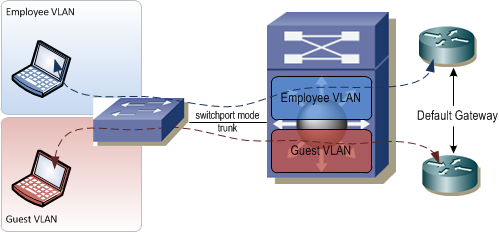The shared services area of the network is meant to provide common services — such as DNS, DHCP, and Internet access — to multiple logical networks/VRFs/customers. Cisco publishes a validated design for shared services that describes the use of multiple virtual firewalls and routers to provide connectivity between the shared services module and the VRFs in the network. I'm going to describe a method of collapsing the shared services firewalls and virtual routers into a single instance running on a single box using some of the features found in Juniper's Junos platform.
Posts for: ##IP
An Introduction to Layer 3 Traffic Isolation
All network engineers should be familiar with the method for virtualizing the network at Layer 2: the VLAN. VLANs are used to virtualize the bridging table of Layer 2 switches and create virtual switching topologies that overlay the physical network. Traffic traveling in one topology (ie VLAN) cannot bleed through into another topology. In this way, traffic from one group of users or devices can be kept isolated from other users or devices.

VLANs work great in a Layer 2 switched network, but what happens when you need to maintain this traffic separation across a Layer 3 boundary such as a router or firewall?